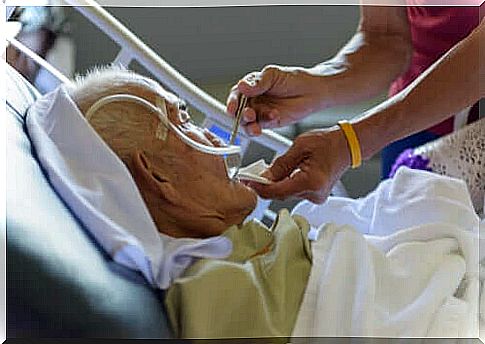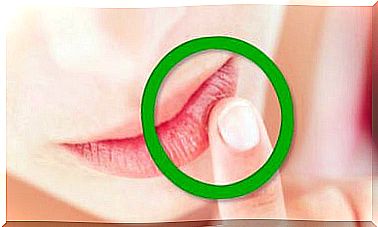Vegetative State: All You Need To Know
The vegetative state is a disorder characterized by the fact that only the patient’s primitive brain is active, which is why the patient has no awareness of himself or his environment. Find out more about this disorder in this article! Here you will learn about the symptoms, diagnosis and prognosis of this disorder.

There are many alterations that can affect our level of consciousness. Among them, the vegetative state occupies a central place.
In the past, this term referred to patients who had lost consciousness and whose vital functions were usually replaced. It was only from the 1970s that the first scientific description of this disorder appeared. It is two recognized neurologists, Brian Jennet and Freud Plum, who are the authors of this first description. Since then, articles analyzing the vegetative state from different angles have multiplied, and this subject is still the subject of controversy today.
Here we explain the most important aspects to know about the vegetative state.
The vegetative state, what is it?
In order to fully understand this disorder, it is necessary to divide the brain into two parts according to the functions of the different areas that make up the brain:
- The cerebral hemispheres control thinking and behavior, which is what makes us aware of ourselves and our surroundings or not. In these hemispheres we find the different lobes (frontal, temporal, occipital, parietal) and their respective functions performed by the neurons that are in the cortex of the hemispheres
- The diencephalon formed by the thalamus and hypothalamus and the brainstem control vital functions. Among these functions are the cycles of sleep and wakefulness, body temperature, respiration, blood pressure, heart rate… This part of the brain corresponds to the primitive brain.

The vegetative state is a long-lasting disorder that occurs when the brain hemispheres stop functioning. The patient then ceases to be aware of himself and his environment. Nevertheless, the primitive brain is in good condition; the patient’s vital functions are still active.
The causes behind the vegetative state
There are several causes of the vegetative state, since any disorder causing brain damage can put the patient in a vegetative state.
When the brainstem and the diencephalon become active again but the cerebral cortex does not, the patient is then in a vegetative state. The most common causes are:
- head trauma (for example, a biker rides without a helmet, has an accident and hits his head)
- disorder that deprives the brain of oxygen, such as respiratory arrest or cardiac arrest
- cerebrovascular disease (for example, an artery in the brain is blocked, which prevents blood from circulating normally, and this blockage will therefore cause a brain infarction)
A tumor, a hemorrhage, a brain infection, the final stage of dementia like Alzheimer’s are other possible causes. These disorders only damage the cerebral cortex, not the primary brain.
Symptoms
Patients in a vegetative state can perform certain actions that make us feel like they are conscious, such as:
- Open their eyes (the patient may have their eyes closed when they are asleep, and their eyes open at other times)
- Breathe, chew, cough, choke, make sounds …
- They can even react to loud stimuli like loud noise
- They sometimes seem to smile and frown
However, it is the primitive brain that performs these actions; the patient is not conscious. These reactions are just the basic involuntary reflexes that we all have.
How do we know that these patients are unaware?
To determine if a person is conscious, these actions must be the consequence of an intention. This intention indicates that the person is connected to their external environment.
- The patient can open and close their eyes and perform eye movements, but there is no intention behind these actions. They are random movements without connection with external stimuli. So if the patient has their eyes open and we move a pen in front of their eyes, the patient will not follow the pen with their eyes.
- The patient does not carry out any motor movement voluntarily or intentionally. When the patient gestures or lifts one end of his body, he is simply reacting to an intense stimulus. The other movements are simply primitive reflexes (swallowing, chewing, sucking …)
- The patient cannot speak or even utter a word. If the patient makes any sound, this sound is a growl or a primitive sound
- He is not able to follow a verbal or written order, nor even to react to an order
- Unconscious patient suffers from urinary and fecal incontinence
In short, the heart and lungs of an unconscious patient continue to function, which is why their blood pressure and cardiorespiratory functions are maintained, but the patient himself is not aware of anything.

Diagnosis of the vegetative state
Diagnosis is based on the assessment of symptoms. Even if the patient’s condition corresponds well to the clinical picture of the vegetative state, it is necessary to observe the patient for a certain period of time in order to be able to confirm this state. Otherwise, it is possible to miss certain signs of consciousness.
X-rays can be taken to find out which part of the brain is affected and to determine if treatment is possible. The possible examinations are the functional magnetic resonance and the electroencephalogram. The latter makes it possible to measure brain activity.
Unfortunately, these exams do not detect the patient’s level of consciousness : they only detect whether the patient still has some consciousness that cannot be seen at first glance. These findings influence long-term medical decisions and the possibility of recovery.
Prognosis
Generally, beyond one month, the patient is considered to be in a persistent vegetative state. The root cause of this condition, the duration and the age of the patient are factors that can change the prognosis.
Even if the vegetative state is considered permanent, it is possible to observe some recovery. But this recovery is minimal: the patient has major sequelae and has a poor quality of life.
Treatment of the vegetative state
Patients in a vegetative state require full attention. The medical team should apply the following measures:
- measures to prevent immobilization problems
- The patient may suffer from ulcers or contractures in the areas on which he is pressed. In addition, blood can get stuck in the veins, causing thrombi and blood clots to form. To avoid this, the patient must be mobilized passively
- good nutrition through tubes that go from the mouth or nose to the stomach or through a tube that goes directly into the stomach; it is also possible to administer the nutrients intravenously
- proper cleaning of tubes and patient to avoid infection
The patient may never regain consciousness
Recovery of vegetative patients is unlikely. Doctors, family, and sometimes even the hospital ethics committee should discuss the patient’s treatment together. The patient’s wishes must be taken into account if his wishes are known or indicated in his will.









